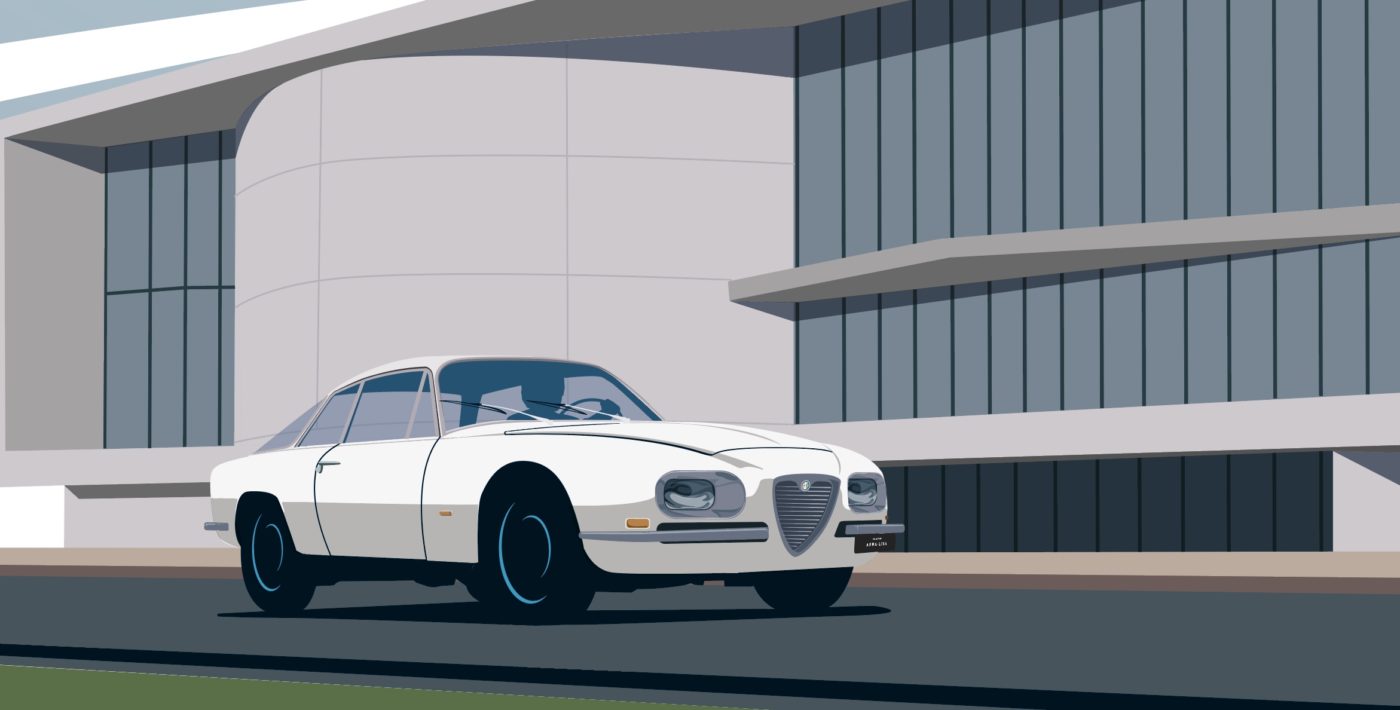
Alfa Romeo
Alfa Romeo and France share a long love story, and for a good reason, Alfa Romeo has French roots! The ANNA LISA Art On Wheels collection is no exception to the rule since it owns several iconic Alfa Romeo.
It all began in 1906 in the suburbs of Milan when the French manufacturer Darracq built a car factory, after initially thinking of establishing it in Naples. The “Società Anonima Italiana Darracq” (SAID) was born and renamed ALFA (“Anonima Lombarda Fabbrica Automobili”) in 1910 after changes in the company’s shareholding. The first Alfa cars were in fact Darracqs.
The very “real” Alfa was the 24HP, a car that reached a terrifying top speed of 60 miles an hour. It wasn’t until 1915, during WWI, that Nicola Romeo, a wealthy engineer and entrepreneur from Naples, acquired the company and built aircraft engines and portable compressors, making a fortune. It was then that the company took the name Alfa Romeo.
The logo of the brand was then changed and adopted a strong symbolism with the red cross and the white field on the left, both borrowed from the coat of arms of Milan, while the snake eating a man on the right side comes from the coat of arms of the Visconti family, the former sovereigns of the city. This logo has evolved throughout the history of the brand.
As for the four-leaf clover, the “quadrifoglio” that adorns the racing cars, it was first adopted by the driver Ugo Sivocci who won a race in 1923, after having ended second in a series of races. Wanting to end these defeats, he decided to paint a white square with a four-leaf clover on the side of his race car, the RL Targa Florio. It worked, until he got killed during a practice session at Monza, in a car that was not adorned with the Quadrifoglio. From then on, all Alfa Romeo racing cars featured the iconic cloverleaf motif, but instead of being set in a square, it was set in a white triangle, as a tribute to Sivocci. Also, from this time onwards, the brand refused to run its factory race cars with the number 17, which was Sivocci’s.
The 1920’s were the beginning of a golden age for Alfa Romeo, that of the fantastic Alfa Romeo 6C and 8C, which were successful in races and were also awarded for their sublime bodywork. This golden age was based on the six and eight cylinder engines of extraordinary power and reliability designed by the brilliant and prolific Vittorio Jano. Alfa Romeo won the very first world championship in 1925, just one year after designing its eight-cylinder engine. Two years earlier, the brand had won the Targa Florio. During this period, Alfa Romeo also won the Mille Miglia Le Mans and the Vanderbilt Cup.
This quest for victory was also based on the talent of another man, Enzo Ferrari. His Scuderia, created in 1929, had become Alfa Romeo’s true racing arm, to the point of becoming the company’s official racing team in 1933 before he ended his collaboration with the brand in 1939.
Like many of its Italian colleagues, the Alfa Romeo brand, by dint of investing in competition and the development of increasingly sophisticated models, was faced with major financial difficulties before being bought by the Italian state in 1933. The brand became a flagship of Italian excellence and the official state brand. Our 1939 Alfa Romeo 6C2500, reputed to be one of the oldest 6C 2500s still in existence, was very probably used by the Italian regime, as were many of its sister cars.
The 6C2500 produced for 14 years until the end of the 50’s is the last great made to measure Alfa Romeo with many iterations made by the greatest coachbuilders, like Touring or Pininfarina. Several models are in our collection, including the 6C2500 Sport Freccia d’Oro of 1950, designed in-house and foreshadowing the first production cars of the company.
After the era of custom-made cars, Alfa Romeo launched in the 1950s smaller cars, manufactured in series and powered by the company’s 4-cylinder engine. This aluminum twin-cam engine, produced for 40 years, was the beginning of a new golden age for the brand. Housed in the frail aluminum bodies designed by Zagato, such as our Alfa Romeo Giulia TZ of 1965, it made the brand a formidable competitor in the world’s greatest competitions. These sporty or grand touring masterpieces, such as the stunning and original 1966 Alfa Romeo 2600 Zagato from our collection, are still celebrated today by enthusiasts around the world.
Fiat bought Alfa Romeo in 1986. Although Alfa Romeo continued to produce sporty versions, it nevertheless progressively lost what stood the brand apart. Our Alfa 3.000 SZ, produced in 1990 as a limited edition, nicknamed “Il Mostro” because of its brutal design, is a strong tribute to this illustrious past.